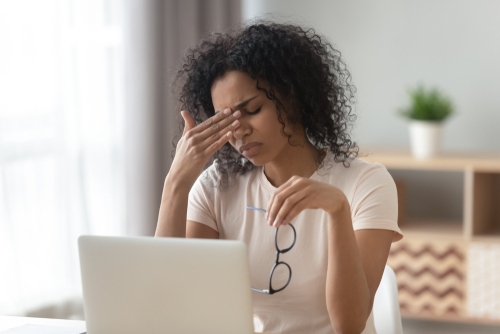
Does it feel like your eyes burn, sting, or are scratchy? Over 16 million Americans are affected by dry eye syndrome.
In addition to an uncomfortable sensation, you may experience redness, light sensitivity, and blurry vision. Dry eyes can also make it difficult to wear contacts or drive at night.
The good news is that relief is available. There are a variety of effective treatments that can restore moisture to your eyes and alleviate symptoms stemming from dryness. Keep reading for seven of the best treatment options for dry eye syndrome!
1. Blink Regularly When Reading or Looking at a Screen
When you’re focused on the page of a book or your computer screen, you naturally blink less. You probably don’t even notice you aren’t blinking as much as you should. What’s noticeable are the symptoms of dry eye that result from it.
Anytime you immerse yourself in an up-close activity, take extra care to blink regularly. Putting a sticky note on the edge of your screen or book can help you to remember.
2. Increase Humidity Levels at Work and Home
When the environment around you is dry, your eyes can be too. To ensure the air around you is not contributing to your dry eye symptoms, place a humidifier in the areas you spend the most time.
You can even get a portable desktop humidifier for work. Think about putting a humidifier in rooms you spend the most time, like your bedroom.
3. Wear Sunglasses
It is always a good idea to wear sunglasses whenever you are outdoors. When it comes to dry eyes, not only do sunglasses protect your eyes from harmful UV rays, but they also protect them from the wind. Even a mild breeze can dry out your eyes.
When selecting sunglasses, wraparound frames are ideal. These frames offer the most protection from potential irritants.
Whether it’s the wind, dust, or pollen, you want to keep them out of your eyes.
4. Take Nutritional Supplements with Omega-3 Fatty Acids
Nutritional supplements containing omega-3 fatty acids can reduce dry eye symptoms in some people. Oils are essential to tears, and supplements can help your eyes produce them correctly.
The Fichte, Endl, and Elmer Eyecare team would be happy to discuss if supplements can help your dry eye symptoms.
5. Drink Plenty of Water Every Day
Dehydration and dry eye can go hand in hand. When your entire body lacks moisture, you can’t expect your eyes to be different.
Do your part to reduce dehydration by drinking at least eight glasses of water a day. Everyone is different, so you may need more water to keep your eyes functioning.
Wherever you go, be sure to bring water with you. Your eyes (and the rest of your body) will thank you!
6. Conserve Tears with Punctal Plugs
When at-home treatments aren’t enough, punctal plugs can be an excellent option for many patients. Also called lacrimal plugs, these are tiny medical devices inserted in your tear ducts.
They are made of silicone or collagen. Most patients are unable to feel or see them. Plugs can be either temporary or permanent.
By closing part of the tear duct, your eyes can maintain more moisture. You can use punctal plugs in conjunction with other treatments.
7. Promote Healing with PROKERA®
Dry eye syndrome can lead to inflammation, which only worsens your symptoms. PROKERA® acts like a bandage to reduce inflammation in your eye and promote healing.
PROKERA® looks like a large contact lens. It contains amniotic membrane tissue that helps the eye regenerate and improves dry eye symptoms. Most patients wear PROKERA® for about a week.
Are your dry eye symptoms bothering you? If at-home treatments are not enough, schedule an appointment with Fichte, Endl & Elmer Eyecare in Buffalo, NY, by calling us at 1-800-309-2020 now!



